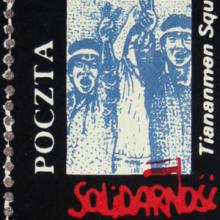Government
Report on a Working Visit of Wojciech Jaruzelski to Moscow
Following the historic roundtable talks that took place in Poland from February to April 1989 between Communist and opposition leaders, Polish Communist leader Wojciech Jaruzelski met with Soviet leader Mikhail Gorbachev in Moscow to discuss the unfolding events in Poland and Polish-Soviet relati

Short Teaching Module: Remembering Tiananmen Square
Although China is located quite far from Eastern Europe, dissidents in Eastern Europe identified with the struggles by opposition leaders in China and used images of the 1989 Tiananmen Square uprising to reinforce memories of resistance in Eastern Europe.
Southeast Asian Politics: Website, Sisters In Islam
The women’s movement has always been inherently global, but by the end of the 20th century there was a new burst of transnational women’s organizing as women used new technologies to network at home and abroad.
Southeast Asian Politics: Song, Philippine Feminist Movement
This song, entitled Maria and sung in Tagalog (a Philippine language), challenges cultural constructions of women as passive, as sex objects or domestic cooks. “Maria” is used as a generic term for woman. The song identifies heroines such as Lorena Barros, Gabriela Silang, and Tandang Sora.

Short Teaching Module: Chinese Propaganda Posters
Visual images provide valuable material for the exploration of childhood, youth and history.
Soviet Dissidents and the "Brain Drain"
In the beginning of 1989, Henry Kissinger met with Mikhail Gorbachev for an informal conversation about the future of U.S.-Soviet cooperation, particularly concerning economic opportunities in the Soviet Union. The problem for U.S.-Soviet trade was the Jackson-Vanik Amendment to the 1974 U.S.
President-Elect Bush Informs Mikhail Gorbachev of His Need for Time to Formulate New Policies
Soviet-American relations thawed during the second term of President Ronald Reagan as he and Soviet leader Mikhail Gorbachev developed a personal rapport, signed the first treaty between the superpowers to reduce nuclear weapons arsenals, the Intermediate-range Nuclear Forces (INF) Treaty, and mo
Plans for Reorganizing Solidarity
Prior to the historic roundtable talks that took place between February and April 1989 in Poland, preparations took place on many levels.
Mikhail Gorbachev Reports on the Trilateral Commission
During the significant changes that were brewing in the Soviet Union and Eastern Europe in the 1980s, Mikhail Gorbachev (leader of the Soviet Union) met with members of the Trilateral Commission, a nongovernmental organization founded in 1973 by private citizens of Japan, North America, and Europ
The Soviet withdrawal from Afghanistan
On 25 December 1979, the Soviet Union deployed its army in Afghanistan, in support of the Afghan Communist government against a group of Muslim opponents.